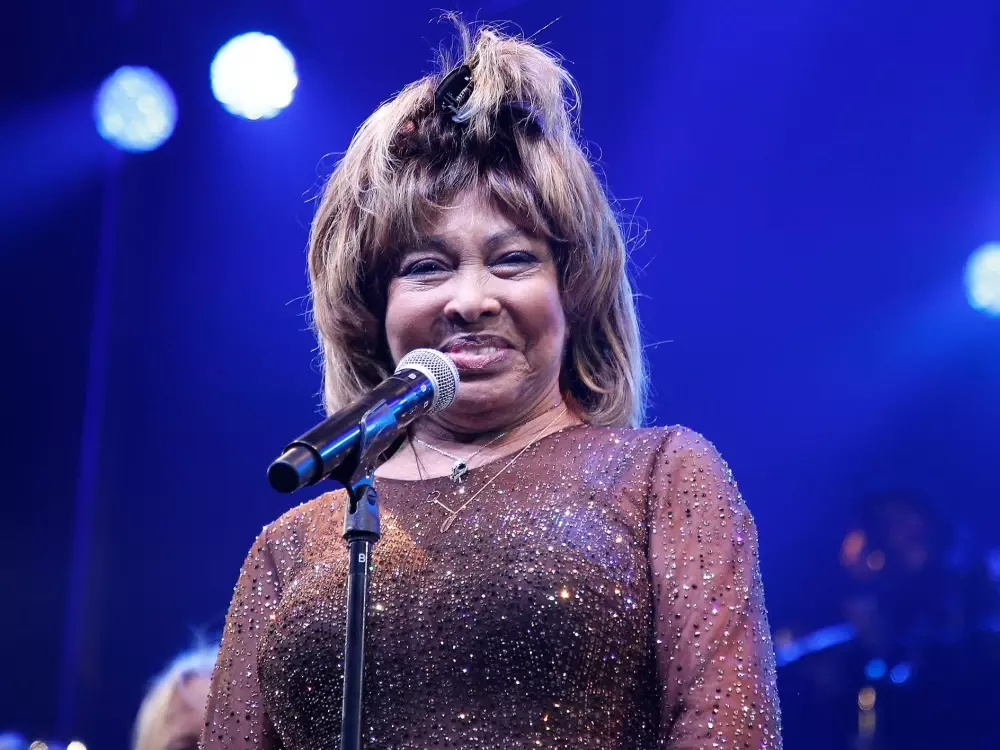Switzerland – Tina Turner, the legendary soul and rock powerhouse renowned for her awe-inspiring vocal range and captivating stage presence, has passed away at the age of 83. Her publicist confirmed that she died on Wednesday at her home in Switzerland after a prolonged illness. Turner’s 2018 memoir, “Tina Turner: My Love Story,” chronicled her battle with various health issues since 2013, including a stroke, intestinal cancer, and kidney failure. Her second husband, Erwin Bach, selflessly donated a kidney to her in 2017, ultimately saving her life.
Over her remarkable six-decade-long career, Turner rose to fame as both a solo artist and as part of a duo with her first husband, Ike Turner. With Ike, she was inducted into the Rock & Roll Hall of Fame and became a fixture on the U.S. pop and R&B charts during the 1960s and ’70s. Tina’s diverse vocal influences, shaped by her love for country music, ’50s R&B, gospel, blues, and soul, contributed to the duo’s high-energy soul and rock sound. From scorching rock growls to smoky blues and velvety R&B numbers, Turner’s versatile and malleable voice showcased her immense talent. One of Ike & Tina’s most recognizable songs, “River Deep, Mountain High,” produced by Phil Spector, stands as an orchestral-gospel triumph.
Turner was also renowned for her masterful interpretations of other artists’ iconic songs. Her renditions of The Beatles’ “Come Together” and The Rolling Stones’ “Honky Tonk Women” added a unique touch, infusing the tracks with her yearning vocals and country twang. However, it was her fiery transformation of Creedence Clearwater Revival’s “Proud Mary” that became her signature tune, featuring her sultry soul drawl and raspy rock ‘n’ roll yelp.
The song earned Turner her first Grammy Award for Best R&B Performance by a Duo or Group with Vocal, marking the beginning of her incredible eight-Grammy-winning career. Notably, she won Best Female Rock Vocal Performance for three consecutive years in the ’80s.
In addition to her exceptional vocal prowess, Turner possessed a commanding stage presence often described as “electrifying.” Her energy was palpable as she effortlessly captivated audiences, exuding a simmering pot ready to boil over. Her natural athleticism translated into powerful and agile dance moves, leading Rolling Stone’s Ben Fong-Torres to dub her “the female Mick Jagger” in 1971.
Turner herself hinted that Jagger had closely studied her stage presence when she and Ike toured with the Rolling Stones in 1969. Their collaboration on a cover of the Jacksons’ “State of Shock” during Live Aid in 1985 was a remarkable display of their combined incendiary talent.
Jagger expressed his deep sadness over Turner’s passing in an Instagram statement, praising her immense talent, generosity, and the support she provided him during his early career.
Born Anna Mae Bullock on November 26, 1939, Turner spent her childhood in rural Nutbush, Tennessee, before relocating to Knoxville with her parents. Despite a distant relationship with her father, who abandoned the family when she was 13, and her mother, Turner found solace in performing. Her love for music blossomed from a young age, as she would sing radio hits she had memorized during music-filled shopping trips, and organize pretend stage shows with her cousins and siblings. Later, she honed her performance skills by singing at picnics alongside renowned trombonist Mr. Bootsy Whitelaw.
At the age of 16, Turner moved to St. Louis to live with her mother and sister Alline. It was there that she discovered Ike Turner & The Kings of Rhythm at the famous East St. Louis venue Club Manhattan. Her impromptu performance of B.B. King’s “You Know I Love You” impressed Ike, leading to her joining the group in 1957. The band eventually became the Ike and Tina Turner Revue, with Tina assuming a prominent role.
However, Ike’s excessive cruelty towards Tina, both personally and professionally, cast a dark shadow over their relationship. In “Tina Turner: My Love Story,” she recounted the doomed nature of their connection, describing Ike’s realization that she would be his financial ticket to success. He became mentally controlling, renaming her “Tina Turner” without her consent and trademarking the name. Physical abuse was also an unfortunate part of their relationship. When she finally left Ike in 1976 during their tour in Dallas, Tina was nearly destitute. She stated during a 2017 appearance on The Jonathan Ross Show that she had to start from scratch to support her family and herself.
Turner released two solo albums while still performing with Ike, including the stripped-down country album “Tina Turns the Country On!” in 1974 and the rock-oriented covers album “Acid Queen” in 1975. Following her separation from Ike, Turner ventured into mainstream entertainment, appearing on the game show “Hollywood Squares” and Cher’s variety TV series. She also embarked on cabaret-style live concerts and contributed to various projects such as the electro-pop cover of the Temptations’ “Ball of Confusion” on the album “Music Of Quality & Distinction, Volume One.”
The year 1984 marked a turning point in Turner’s career. She collaborated with David Bowie on the reggae-influenced title track of his album “Tonight” and achieved widespread success as a solo artist with the release of the blockbuster album “Private Dancer.” The album embraced the slick production values of the era while showcasing Turner’s commanding voice and eclectic musical influences.
It featured notable tracks such as the Mark Knopfler-penned title track, covers of songs by David Bowie, The Beatles, and Ann Peebles, and the vulnerable hit single “What’s Love Got to Do With It.” The latter earned Turner Grammy Awards for Record of the Year and Best Female Pop Vocal Performance, solidifying her reputation as a survivor and a musical force.
Throughout the ’80s, Turner continued to dominate the charts with hits like “We Don’t Need Another Hero (Thunderdome),” “One of the Living” from the film “Mad Max Beyond Thunderdome,” and successful collaborations such as “It’s Only Love” with Bryan Adams and the empowering anthem “The Best.” She became an iconic figure on MTV, performing at the first-ever MTV Video Music Awards and winning Best Female Video in 1985 for “What’s Love Got to Do With It.”
Turner’s commercial success extended into the ’90s, notably with the release of the biopic “What’s Love Got to Do With It” in 1993. Based on her autobiography “I, Tina” from 1986, the film featured Laurence Fishburne as Ike and Angela Bassett as Tina. Both actors received critical acclaim and awards, with Bassett winning a Golden Globe for her performance. The film revitalized Turner’s career, as the soundtrack’s lead single, “I Don’t Wanna Fight,” became an international hit. In 1995, she had the honor of recording the sleek James Bond theme song “GoldenEye” for the film of the same name.
After relocating to Switzerland in 1995, Turner gradually reduced her workload in the late ’90s and early 2000s. She officially retired after her 50th-anniversary tour in 2009 but remained actively involved in preserving her musical legacy. Turner collaborated on the development of “Tina: The Tina Turner Musical,” which premiered on Broadway in 2019. Additionally, she delivered a memorable performance of “Proud Mary” alongside Beyoncé at the 2008 Grammy Awards, showcasing her enduring impact and influence in the music industry.
Statement by President Joe Biden on the Passing of Tina Turner: Jill and I send our love and prayers to her husband Erwin, the rest of the Turner family, and fans around the world who are mourning today for the woman they agree were “simply the best”.
Tina Turner’s legacy as a soul and rock powerhouse, with her mesmerizing stage presence and octave-defying voice, remains an indelible part of music history. Her journey from a small-town girl in Tennessee to an international superstar exemplifies resilience, strength, and the transformative power of music. As the world mourns her passing, her contributions to the music industry and her inspirational story will continue to resonate with generations to come.



